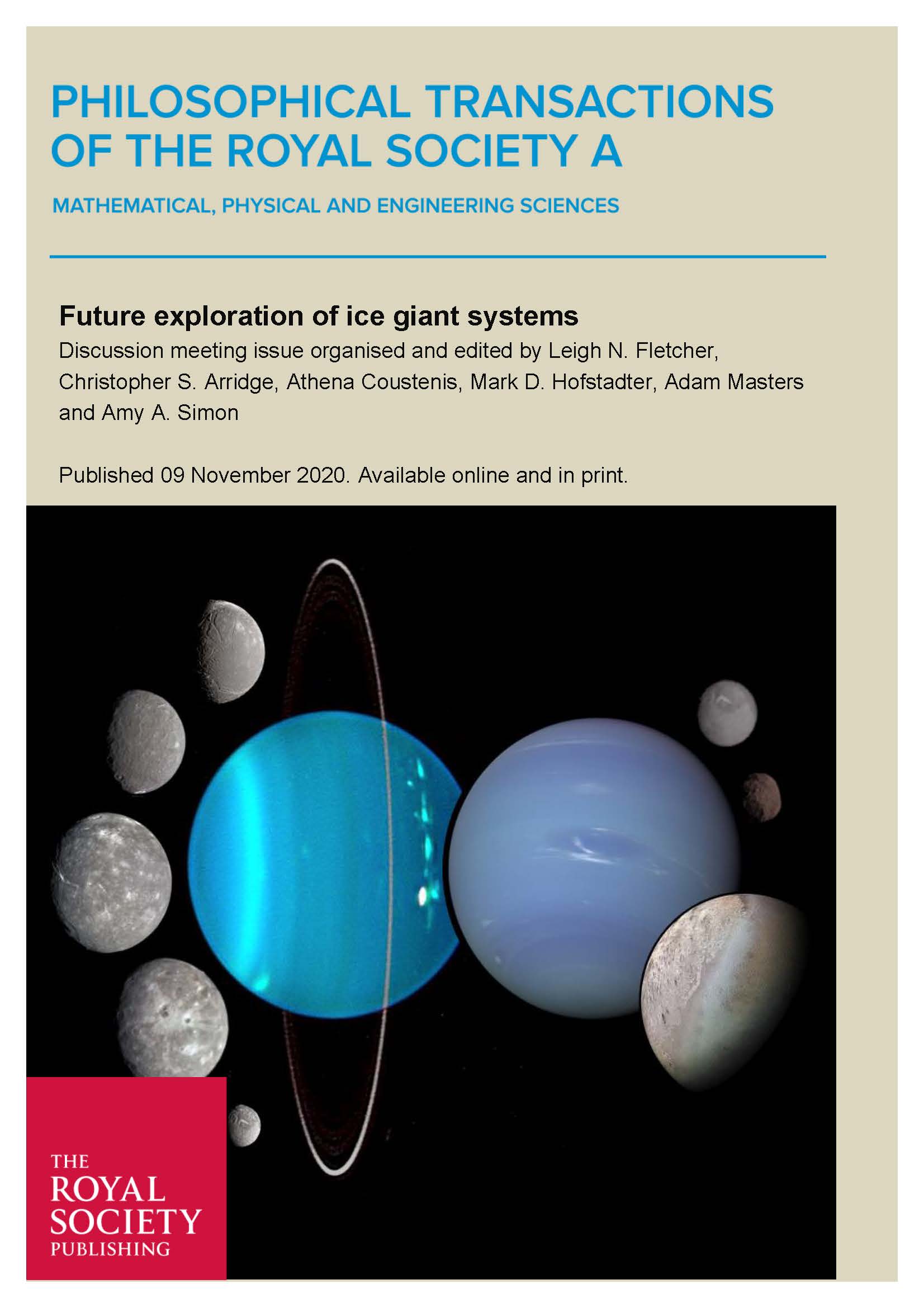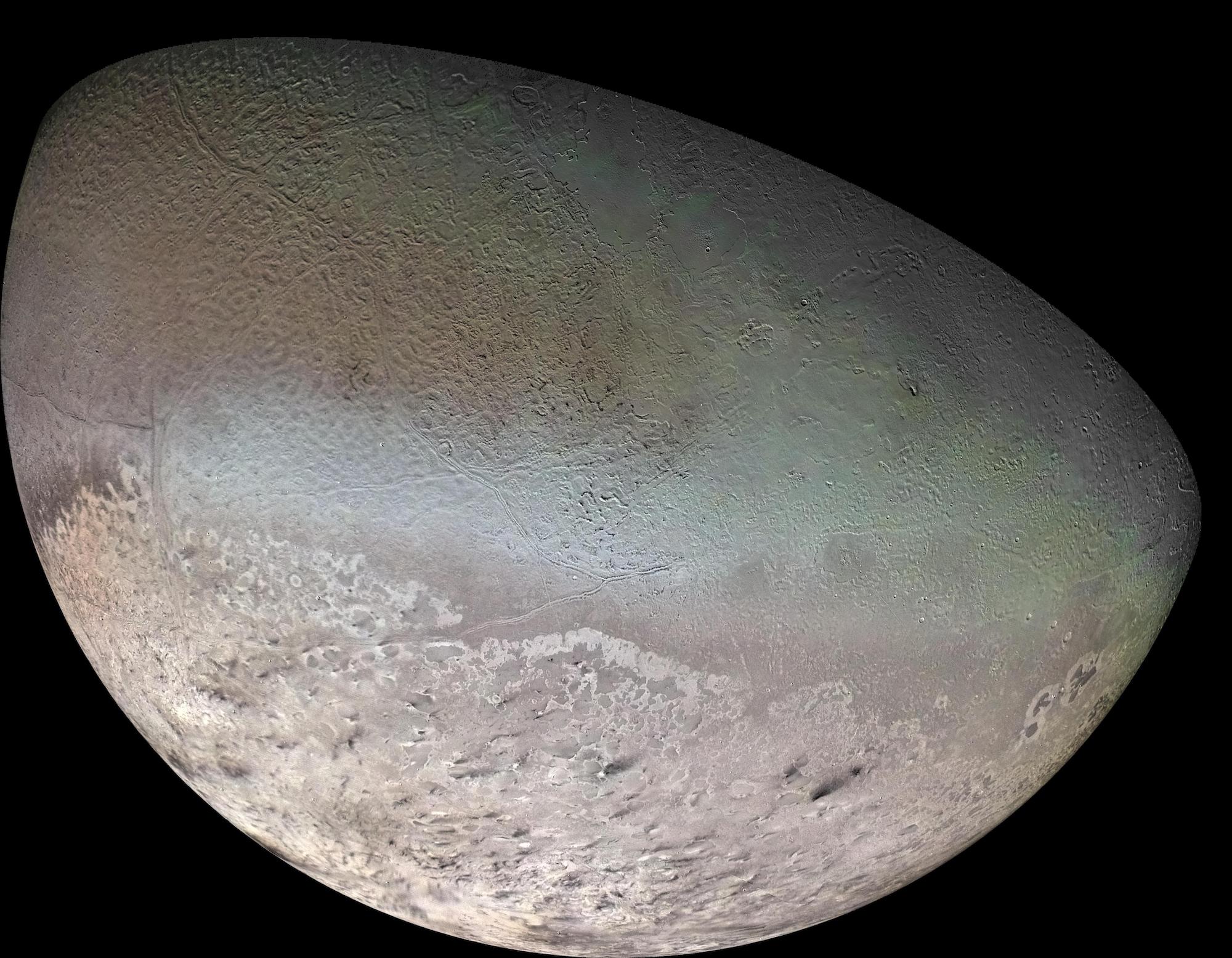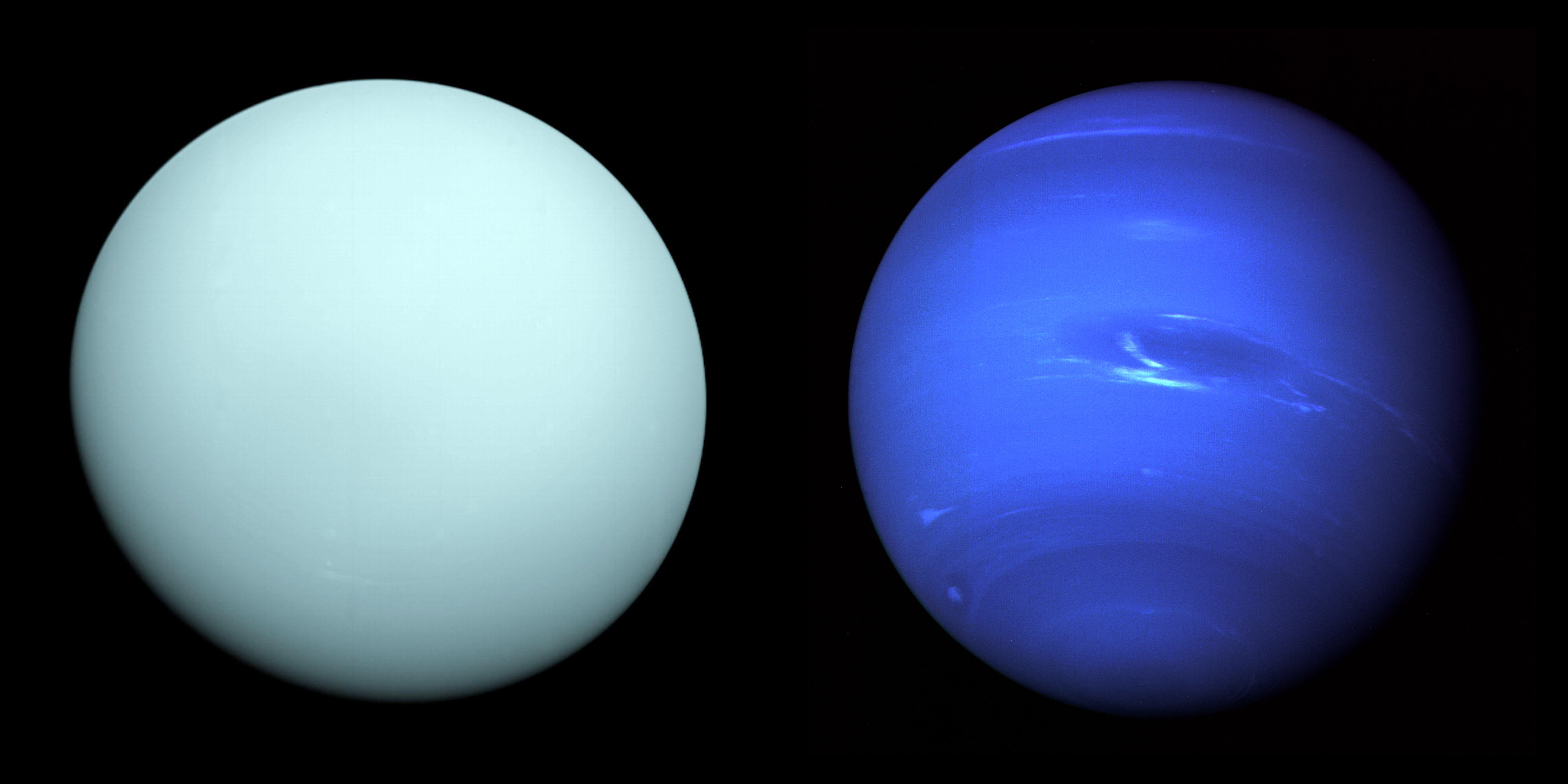News
Special Journal Issue Spotlights Future Exploration of Ice Giants and Their Moons

Front cover of the Royal Society’s special issue of Philosophical Transactions of the Royal Society A on the future exploration of the ice giants and their moons.Credit: The Royal SocietyIn January 2020, more than 200 researchers from the planetary science community gathered at The Royal Society in London, England, for a three-day workshop, where they discussed the current knowledge and future exploration of the solar system’s blue-hued ice giants, Uranus and Neptune.
Organized in part by planetary scientist Kathleen Mandt and space physicist Ian Cohen from the Johns Hopkins Applied Physics Laboratory in Laurel, Maryland, the meeting covered everything from the planets’ tilted magnetic fields, swirling atmospheres and icy moons to their broad relevance for understanding this important class of exoplanets.
Now, the Royal Society has published a special issue of its journal Philosophical Transactions of the Royal Society A based entirely on the discussions from the January meeting, offering the public and broader scientific community perspectives on what exploring Uranus and Neptune could teach us about planets in our solar system and elsewhere. The issue titled “Future Exploration of Ice Giant Systems” was published online Nov. 9.
“This is an exciting time for the community as we look forward to the next decade and the exciting possibilities for finally revisiting the ice giants,” said Cohen, who authored three articles in the special issue. “My hope is that this issue inspires and excites the community, helping them to realize the outstanding mysteries that the ice giants hold and the amazing possibilities and scientific discoveries that await us when we revisit these systems.”
To date, NASA’s Voyager 2 spacecraft is the only robotic space mission to visit Uranus and Neptune, making a short flyby past each planet in the 1980s and providing the scientific data that forms a lot of what we know about them and their peculiarities.
Take, for example, the unusual magnetospheres that surround Uranus and Neptune. Unlike Earth, Jupiter and Saturn, where the magnetic field passes through the center of the planet and is tilted from 1 to 11 degrees from the axis each planet spins on, both Uranus and Neptune have magnetic fields that are off-center and tilted 47 degrees (Neptune) and 60 degrees (Uranus) from the rotational axis.
“Why that is, and what’s likely generating those magnetic fields, is a mystery,” Cohen said.
It’s one of many.
Unknowns exist about the interiors of ice giants; gaps hamper our understanding about the composition and dynamics of atmospheres in the weakly lit, frigid reaches where Uranus and Neptune orbit; and mysteries abound about the origin and evolution of ice giants, their rings and their moons.
While ground-based observations and space telescopes that include Hubble, Spitzer and Herschel have provided more details, researchers have long hoped to return a spacecraft to the ice giants. And in recent years that idea has gained momentum.
“Many in the planetary science community will argue that the ice giants are the next big destination in the outer solar system,” Cohen said. “Not only are they the only planets in the solar system that haven’t been explored with a dedicated orbiting mission, but they were also highly recommended by the previous Decadal Surveys for both planetary science and heliophysics.”

Credit: NASA/JPL/U.S. Geological Survey
The National Academies of Sciences, Engineering and Medicine spearheads the Decadal Surveys, which define a scientific community’s vision for the coming decade, including science objectives and conceptual missions that policymakers and organizations like NASA and the European Space Agency can reference.
Earlier this year, Abigail Rymer, a space physicist at APL and author of two papers in the special issue, led a team in the development of a conceptual mission to Neptune and its quirky moon Triton for the next Planetary Science Decadal Survey publication in 2023.
The mission, called Neptune-Odyssey, is proposed to orbit the Neptune system for four years, following a trajectory that would provide detailed data about Triton — a body thought to be a captured Kuiper Belt Object that could possibly sustain a water ocean beneath its surface — as well as dropping an atmospheric probe into Neptune’s turbulent atmosphere.
It would address questions about the interiors of ice giants, the causes of their strange magnetic fields, and the planets’ evolution, which together would have broad applications to understanding the hundreds of Neptune-like exoplanets that have been discovered.
“A mission like this is vital to understanding Neptune in a way that a flyby can’t do as well,” Rymer explained. “We need the opportunity to sit and stare.”
But a flyby could be our first step back to the ice giants.
Currently in consideration for NASA’s low-cost Discovery Program is a flyby mission called Trident, led by APL planetary scientist Louise Prockter. The spacecraft would capture almost the whole surface of Triton over a 10-day encounter, answering outstanding questions such as whether it has a subsurface ocean and what forces are driving towering plumes discovered by Voyager 2 in Triton’s southern hemisphere.
“We hope to answer fundamental questions about how icy worlds work, which will help us understand ocean and active worlds in our own solar system and explore further the evolution of habitable worlds here and beyond,” Prockter said.
